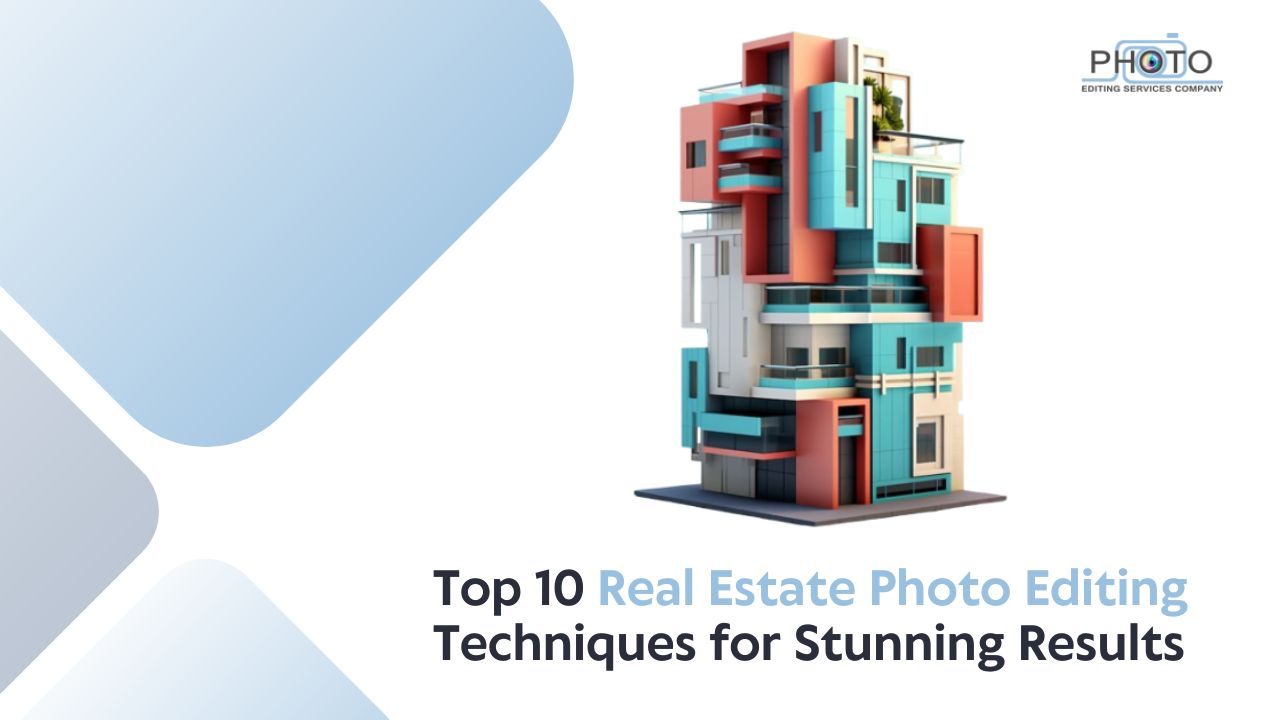Top 10 Real Estate Photo Editing Techniques for Stunning Results
In today’s competitive real estate market, high-quality images are crucial in attracting potential buyers. First impressions are often made through photos, and properties with visually appealing images are far more likely to stand out. To achieve stunning results, real estate agents and photographers need to leverage advanced photo editing techniques that enhance property features and make listings shine. In this article, we’ll explore the top 10 real estate photo editing techniques to elevate your property images and boost engagement.
Understanding Real Estate Photo Editing
Real estate photo editing involves the process of enhancing property images to ensure they are visually compelling and represent the property in its best light. This process goes beyond simple adjustments, such as improving brightness or contrast. It includes correcting lens distortions, color balancing, removing unwanted elements, and ensuring the right exposure for a natural, inviting look. Understanding these editing techniques is crucial for delivering high-quality images that capture attention, increase interest, and drive potential buyers to view the property.
Here Are the Top 10 Real Estate Photo Editing Techniques for Stunning Results
1. Correcting Exposure

Proper exposure is essential for real estate photos. Overexposed or underexposed images can wash out key details or make rooms appear darker and smaller. Adjusting exposure levels ensures the image captures the natural light in each room, making the space appear more open and inviting. Bright, well-lit images help create a warm and appealing atmosphere.
2. Adjusting White Balance

White balance is a critical element that ensures colors are accurately represented. In real estate, proper white balance is essential to avoid yellowish or blue hues that can distort the property’s true colors. Adjusting white balance ensures that the color tones in images are natural and reflect the property’s real aesthetic.
3. Correcting Lens Distortion

Wide-angle lenses are often used to capture more of a room in a single shot, but they can sometimes cause distortion, making straight lines appear curved. Correcting lens distortion during editing helps restore the image to its natural perspective, ensuring that walls, doors, and furniture appear properly aligned.
4. Enhancing Colors and Contrast

Enhancing colors and contrast can add vibrancy and depth to your photos, making features like walls, floors, and fixtures pop. Adjusting saturation levels and sharpening contrast makes images visually appealing while maintaining a realistic look. Avoid oversaturation, as this can make the images look unnatural.
5. Sky Replacement

Exterior shots can be significantly impacted by weather conditions. Sky replacement involves swapping a dull or overcast sky with a bright, blue one to make outdoor shots more appealing. This technique is particularly useful for making exterior property shots look more vibrant and inviting.
6. Removing Clutter and Unwanted Objects

Clutter can distract from the key features of a property. By removing unnecessary objects or distractions, such as cords, personal items, or background elements, you can create a cleaner, more polished look. This ensures the focus remains on the property itself.
7. Sharpening Details

Sharpening enhances the clarity of an image, bringing out fine details such as textures in walls, furniture, or flooring. This technique is particularly effective in highlighting unique property features, ensuring that potential buyers can see the quality and craftsmanship up close.
8. Blending HDR Images

High Dynamic Range (HDR) photography involves merging multiple images with different exposures to create a balanced, well-lit photo. Blending HDR images ensures that both the highlights and shadows are properly exposed, capturing the full range of light in a room and giving the photo a polished, professional appearance.
9. Perspective Correction

Photos of buildings often suffer from perspective distortions where walls or other vertical lines appear tilted. Perspective correction helps to straighten these lines, ensuring the property appears true to life. This technique is especially useful for exterior shots of tall buildings.
10. Virtual Staging

Virtual staging involves digitally adding furniture or decor to an empty room to help buyers visualize the space’s potential. It’s a cost-effective alternative to traditional staging and can make a significant impact on how potential buyers perceive the property’s layout and design possibilities.
Conclusion
Incorporating these 10 real estate photo editing techniques can drastically improve the quality of your property images and create stunning results that attract more buyers. Whether it’s correcting exposure, enhancing colors, or applying advanced techniques like HDR blending and virtual staging, each step plays a vital role in ensuring your listings stand out in the competitive real estate market. By mastering these techniques, you can elevate your marketing efforts and ultimately drive better results for your real estate business.
Outsource your real estate photo editing to Photo Editing Services Company, a global leader in professional image enhancement. Our experienced team offers a range of services including HDR blending, virtual staging, color correction, and much more to elevate your property listings.

